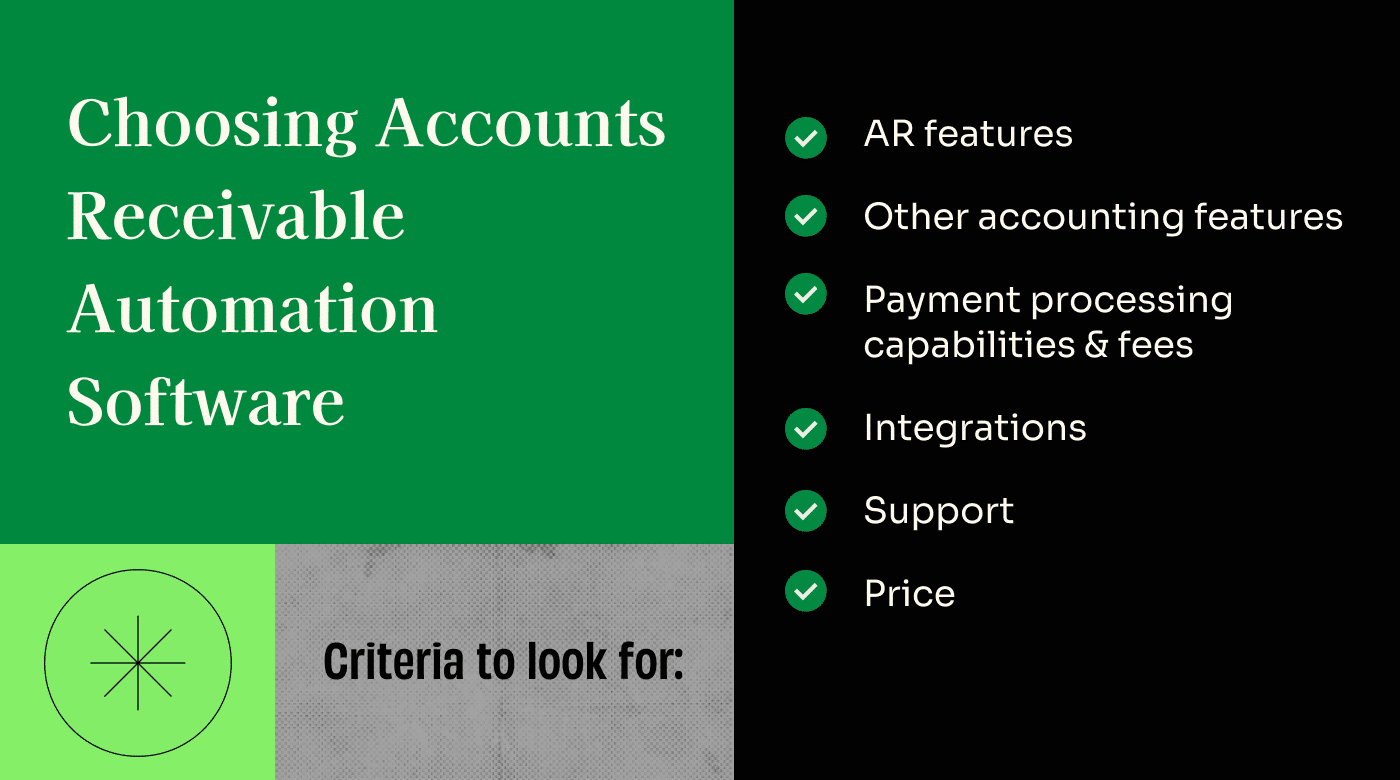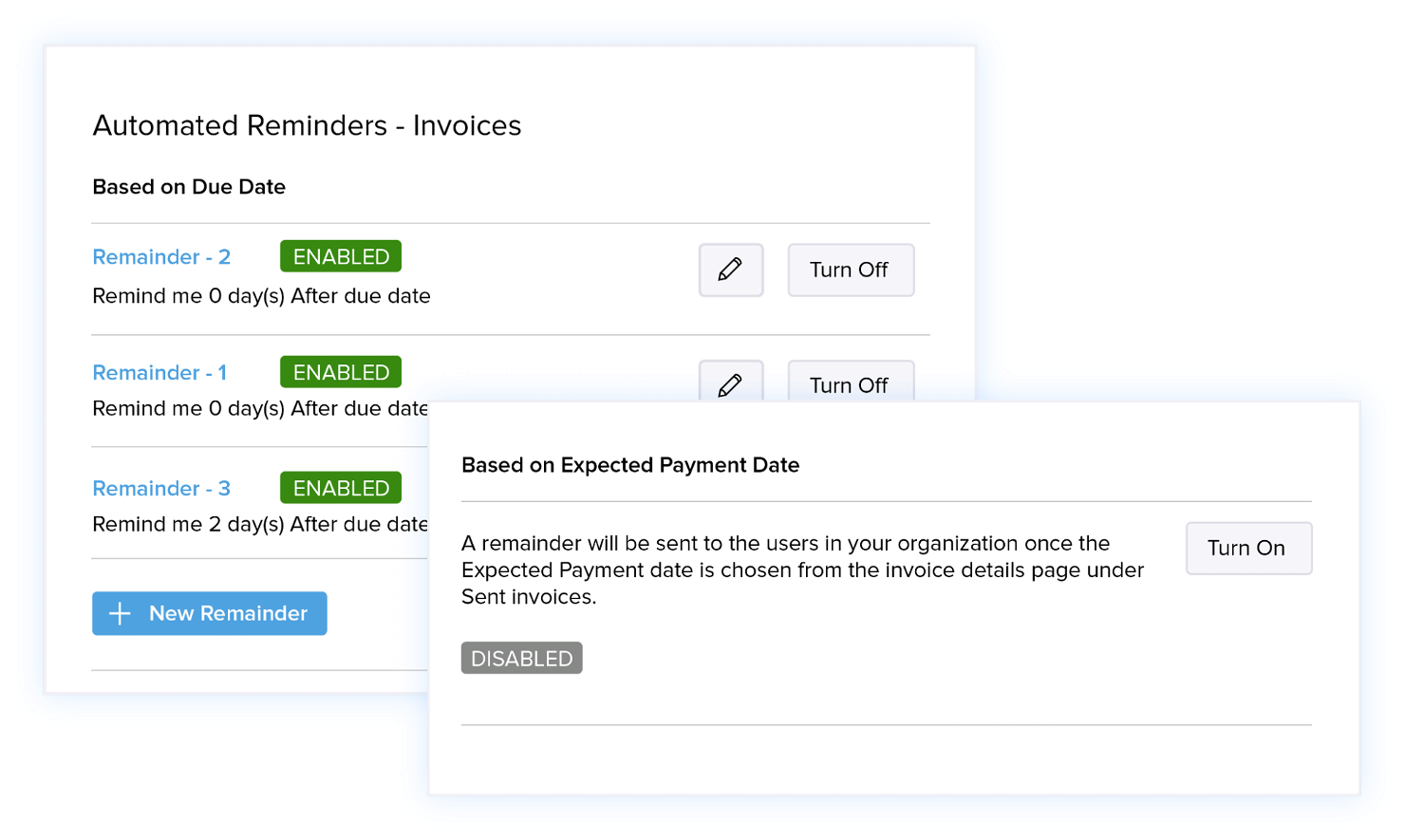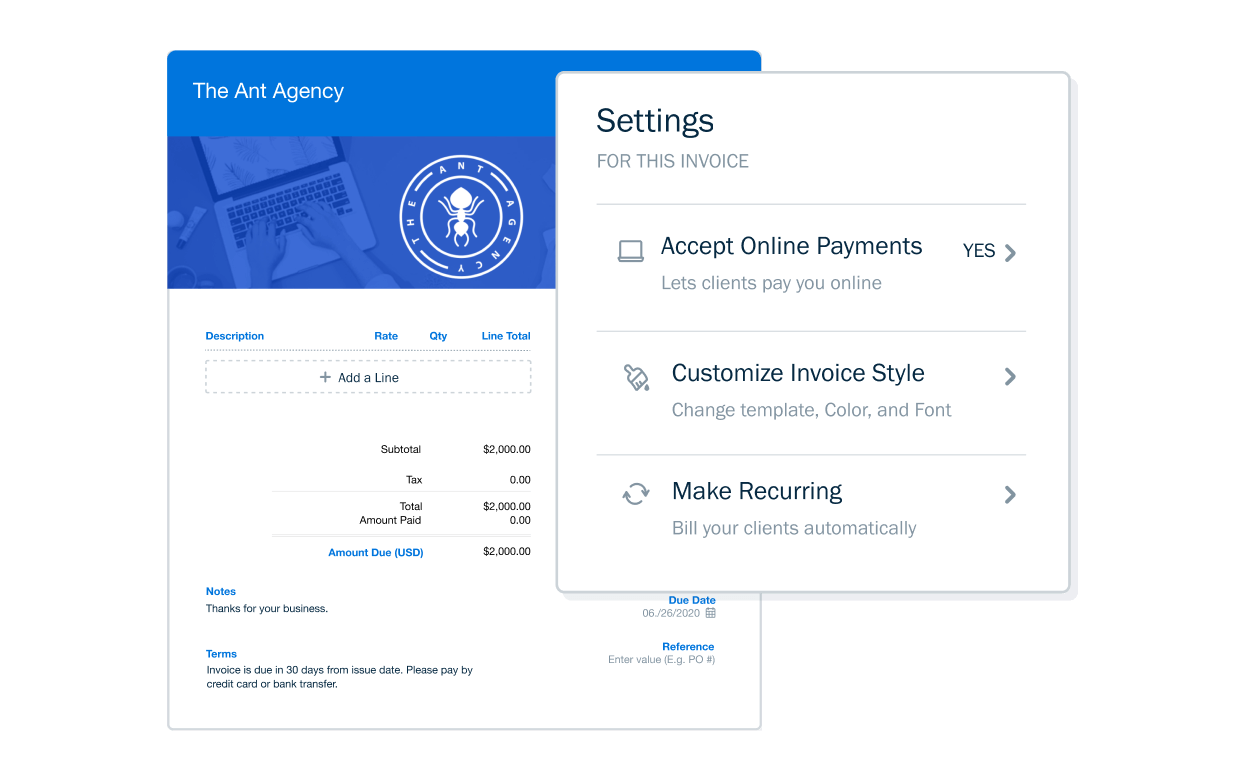10 Best Accounts Receivable Automation Software Shortlist
Here's my pick of the 10 best software from the 20 tools reviewed.
Our one-on-one guidance will help you find the perfect fit.
With so many different AR solutions out there, figuring out which one is right for you is tough. You know you want to automate tasks related to invoicing, payment processing, and reconciliation to reduce manual efforts and improve the overall efficiency of accounts receivable operations but you need to figure out which tool is best. I've got you! In this post I'll help make your choice easy, sharing my personal experiences using dozens of different tools while I was doing consulting, with my picks of the best accounts receivable automation software.
What Is Accounts Receivable Automation Software?
Accounts receivable automation software refers to digital solutions used to facilitate the invoicing process, tracking of payments, and optimization of the overall accounts receivable workflow for businesses.
Through features like automated invoicing, online payment processing, invoice tracking, reconciliation tools, and reporting, these tools aim to accelerate cash flow, reduce late payments, and enhance visibility into the accounts receivable process.
Overview of the Best Accounts Receivable Automation Software for 2024
Based on a combination of features like user-friendliness, functionality, and value, these are the best accounts receivable automation solutions on the market today.
Centime is a comprehensive financial management tool that offers advanced solutions to streamline and enhance the accounts receivable process for businesses. Automate your accounts receivable and accounts payable and monitor your cashflow all in one platform.
Why I picked Centime: I chose Centime for accounts receivable automation because it provides a robust solution that enhances collections effectiveness, reduces overdue payments, and leverages AI to predict cash inflows and payment delays. This tool is particularly beneficial for businesses looking to optimize working capital and understand future cash flows for overall financial health.
Centime Standout Features and Integrations:
Standout features include accounts receivable automation, cash flow forecasting, working capital credit solutions, KPI tracking, and more.
Integrations include NetSuite, QuickBooks, and Sage Intacct.
Pros and cons
Pros:
- Integration with banking and CRM systems
- Real-time cash flow forecasting capabilities
- Automated triggers for managing accounts receivables
Cons:
- May be expensive for smaller businesses
- Learning curve for new users
Xero is a cloud-based accounting platform that combines AR, AP, bookkeeping, and more. It targets the small business and contractor crowd, offering a relatively simple solution to meet the needs of smaller businesses.
Why I picked Xero: I selected Xero because it’s super simple to use for invoicing, automated invoicing, and integrated payments. Xero’s mobile app is also useful, particularly for its receipt capture feature.
Xero Standout Features and Integrations:
Standout features of Xero include simple integration with payment processors, automated invoicing, and basic accounting functionality.
Integrations include Gusto, Stripe, HubSpot, Shopify, MailChimp, and more.
Pros and cons
Pros:
- Integrated payments
- Mobile app
- Budget-friendly
Cons:
- Limited reporting features
- ACH payment fees
Melio is a payment platform designed to simplify the process of paying and getting paid for businesses. It allows users to pay vendors, suppliers, and any business bills, as well as send invoices and receive payments online.
Why I picked Melio: Melio offers flexible payment options, allowing customers to pay via credit card or ACH bank transfer, instant transfer, and mail cheques. This flexibility can lead to faster payment cycles and improved cash flow for businesses. The platform also offers a personalized payment page link, enabling businesses to add their unique link to business cards, email signatures, or websites, making it easier for customers to initiate payments.
Melio Standout Features and Integrations:
Standout features include approval workflows, pay over time, bill bundling, role and permission assignment, international payment support, and a mobile app for payments on the go.
Integrations include QuickBooks, Xero, and Amazon Business.
Pros and cons
Pros:
- Offers deferred payment options
- Automated bill capture
- ACH bank transfers are completely free to send
Cons:
- International payments can only be made in USD and are limited to bank transfers or Mastercard credit cards
- Occasional payment delays with ACH transfers
Zoho Books is a cloud-based accounting platform that handles invoicing, AP, bookkeeping, inventory management, and more. It’s designed to be an all-in-one platform and competes with the likes of QuickBooks and Sage Intacct. With that said, its jack-of-all-trades approach means that it lacks some of the advanced AR automation features offered by some of the other tools on this list.
Why I picked Zoho Books: I picked Zoho Books primarily because of its user-friendliness, both in the software’s UI and in its ease of use for integrating with third-party apps and tools.
Zoho Books Standout Features and Integrations:
Standout features include customizable reminders and customer communications, inventory management tools, simplified vendor and customer portals, and more.
Integrations include payment gateways (PayPal, Stripe, etc.), internal Zoho apps, document software, and over 500 other apps via Zapier.
Pros and cons
Pros:
- Transparent and affordable pricing
- All-in-one cloud accounting platform
- Easy to use and integrate with other apps
Cons:
- Not suited for large firms
- Lacks native integrations with ERP systems
Freshbooks is an invoicing and accounting software designed for small businesses, solopreneurs, and freelancers. Its features are relatively simple, and that’s the point: It’s easy to use, even for users with no accounting experience. And it supports custom invoicing, estimates, built-in time tracking, and other features that contractors will find useful.
Why I picked Freshbooks: I selected Freshbooks primarily because it’s cheap and easy to use. While it lacks some of the bells and whistles that some major competitors offer, Freshbooks is a genuinely simple platform that’s perfect for sole proprietors and freelancers.
Freshbooks Standout Features and Integrations:
Standout features include all-in-one functionality for invoicing and basic accounting, as well as built-in time tracking, professional invoicing, and integrated payments.
Integrations include Gusto, Outlook, Indeed, Gmail, HubSpot, and more.
Pros and cons
Pros:
- Low-cost plans with transparent pricing
- All-in-one invoicing and accounting functionality
- Simple UI (even for non-accountants)
Cons:
- Lacks financial insights and advanced data analytics
- Limited functionality for large firms
BlackLine is a unified cloud accounting platform for mid-sized to large firms. It’s designed to help finance and accounting teams focus on higher-value activities by streamlining (and automating) as many manual processes as possible—and by providing excellent forecasting and analytics tools.
BlackLine automates many key components of the AR process, from invoicing and payment matching to past-due collections and dispute management.
Why I picked BlackLine: I selected BlackLine primarily because of its risk management and credit risk analysis tools. BlackLine uses unified customer data to help teams gauge credit risk in real-time.
BlackLine Standout Features and Integrations:
Standout features of BlackLine include real-time risk profiling to help firms use existing data to gauge credit risk (and set credit terms). It also features automated collections management, instant payment/invoice matching, and enhanced AR intelligence tools.
Integrations include other BlackLine products along with ERP systems from NetSuite, SAP, Oracle, Microsoft Dynamics, and more.
Pros and cons
Pros:
- Efficient internal communication tools and customer interaction protocols
- Advanced tools to assess credit risk, set credit terms, and manage disputes and deductions
- Excellent analytics and AR intelligence insights
Cons:
- Opaque pricing
- Overkill for smaller firms
Bill (formerly branded as Bill.com) is an accounts payable and accounts receivable platform that’s fully web-based. It’s most popular as an AP tool, but it has expanded to cover AR as well—and offers ample automation features in both categories. It integrates with most financial and business software and offers bi-directional syncing with most major accounting platforms.
Why I picked Bill: I selected Bill because it offers both AP and AR in one platform, with innovative automation features in both departments.
Bill Standout Features and Integrations:
Standout features of Bill include the combination of AR and AP in one platform, which helps managers oversee a more complete financial picture of money coming in and out. It also offers the option to send paper invoices via mail directly from the Bill platform.
Integrations include QuickBooks, Xero, NetSuite, Sage Intacct, Microsoft Dynamics, and more.
Pros and cons
Pros:
- Simple integrations and widespread bi-directional syncing with most financial tools
- Transparent and affordable pricing
- Unified platform for AR and AP
Cons:
- Requires external accounting solution
- Additional fees for transactions
SoftLedger is a comprehensive cloud accounting platform that has custom solutions for a wide variety of business sizes. It’s a jack-of-all-trades accounting software that covers all the bases. It offers integrated bank and credit card feeds, automated invoicing, and custom invoice formatting.
Why I picked SoftLedger: I selected SoftLedger because it supports custom invoicing and billing metrics. For firms that bill customers based on usage or custom metrics, SoftLedger makes it easier to convert these into billable line items for more accurate invoicing.
SoftLedger Standout Features and Integrations:
Standout features of SoftLedger include custom billing metrics that are well-suited to usage-based billing and other custom metrics. SoftLedger also supports crypto accounting (and crypto payments) in the AR process.
Integrations include Stripe, Plaid, and most financial institutions through an Open Banking API.
Pros and cons
Pros:
- Headless accounting API for custom development
- Supports cryptocurrency and blockchain asset bookkeeping
- Scalable
Cons:
- Opaque pricing
- Limited automation features
Xledger is a cloud-based accounting and financial management software that specializes in multi-entity financial management, offering automation of up to 75% of accounting and financial tasks. Its unique selling point lies in its ability to efficiently manage financial data for multiple entities, providing a unified solution with features such as project accounting, intercompany transactions, and comprehensive reporting & analytics.
Why I Picked Xledger: As accounts receivable automation software, Xledger stands out for its ability to streamline and optimize the invoicing and payment collection processes. The platform automates critical tasks such as invoice creation, sending reminders, and tracking payments, which significantly reduces the manual effort required and accelerates cash flow. Xledger's real-time reporting functionality allows businesses to have up-to-date visibility of their accounts receivable status, aiding in better cash management and forecasting.
Xledger Standout Features and Integrations
Features include real-time reporting, automation of core financial processes, scalable cloud architecture, integrated project management, advanced budgeting and forecasting, multi-currency and multi-entity support, robust security protocols, comprehensive audit trails, and intuitive dashboards for financial analytics.
Xledger natively integrates with several other tools and platforms to provide a seamless workflow experience. These integrations include Microsoft Excel, Salesforce, Power BI, Bank APIs for automated banking transactions, HR systems, procurement software, project management tools, customer relationship management (CRM) systems, electronic payment processing platforms, and tax compliance software.
Pros and cons
Pros:
- High degree of automation for financial processes
- Comprehensive multi-entity and multi-currency support
- Real-time financial reporting and analytics
Cons:
- Potentially high cost for smaller businesses
- Slight learning curve for new users
Growfin is an accounts receivable automation software that targets unicorns and growth-stage startups. AR is its central focus, but Growfin is designed to be used in tandem with other accounting and finance tools. It uses AI and machine learning to power AR automation workflows and to provide real-time insights to accounting and finance teams. It also has ample collaborative features for dispute management and past-due collections.
Why I picked Growfin: I selected Growfin primarily because of its collaborative features. The software has task management, internal communications, and customer communications built into one platform for simplicity.
Growfin Standout Features and Integrations:
Standout features of Growfin include collaborative features to help accounting and finance teams work hand-in-hand with customer-facing teams during the collections and dispute management process. It also has real-time AR tracking to help teams visualize accounts blocking cash inflows.
Integrations include NetSuite, Salesforce, and more, plus custom ERP integrations handled by Growfin’s team.
Pros and cons
Pros:
- AI and machine learning-driven insights
- Intuitive UI and engaging data visualization
- Enables interdepartmental communication and collaboration
Cons:
- Limited out-of-the-box integrations
- Solely AR-focused
| Tools | Price | |
|---|---|---|
| Centime | From $149/month | Website |
| Xero | From $15/month (billed annually) | Website |
| Melio | From $18.50/month + $8/user/month (billed annually) | Website |
| Zoho Books | From $15/user/month (billed annually) | Website |
| FreshBooks | From $5.70/month | Website |
| BlackLine | Pricing upon request | Website |
| BILL | From $29/user/month | Website |
| SoftLedger | Pricing upon request | Website |
| Xledger | Pricing upon request | Website |
| Growfin | Pricing upon request | Website |

Compare Software Specs Side by Side
Use our comparison chart to review and evaluate software specs side-by-side.
Compare SoftwareOther AR Automation Software Options
Didn’t find what you were looking for? Here are some other good options for automating accounts receivable processes.
Selection Criteria for Accounts Receivable Automation Software
I used the following selection criteria to develop my list of the best accounts receivable automation software for this article:

Core functionality
At its core, AR automation software should enable your firm to:
- Create, send, and monitor invoices
- Manage customer account credits and payments
- Process transactions automatically
- Match invoices to credits and customer payments
- Deliver analytics and reports on the current status of receivables
- Build custom workflows to define rules, exceptions, and best practices for AR processing
- Integrate with existing accounting and ERP systems
AR automation software should also enable these processes with minimal input required from accounting and finance teams. As the name suggests, AR automation software is specifically designed to improve efficiency by increasing the percentage of AR workflow that can be automated.
Key features
Here are some specific unique features that I looked for in AR automation software:
- Automated invoicing: Solutions should automate key processes in your firm’s invoicing system, ideally by integrating with existing systems, like CRMs and POS systems. All accounting software solutions will provide basic invoicing functionality, but I focused on software with substantial automation features.
- Paperless billing and payment reminders: Modern AR automation should be primarily digital. I focused on tools with integrated paperless billing, invoicing, reminders, and receipt distribution.
- Payment processing: AR automation software should also be able to handle payments from customers, either directly or through third-party integrations.
- AR intelligence & reporting: AR automation software should ideally also provide detailed reporting and AR intelligence data to help managers oversee the process, track long-term trends, and access real-time snapshots of receivables.
- Disputes, deductions, & collections management: Dispute resolution, collections, and deductions are an inevitable part of managing receivables. A good AR automation software will help to automate certain elements of this process, helping to reduce hands-on time requirements and ideally helping maintain better relationships with customers.
Usability
The usability of internal tools is vital. A solution won’t actually save your team time if they can’t figure out how to use it effectively. Some legacy AR systems are notoriously difficult to use for new users, so I focused on tools with intuitive UIs and good ratings for usability. Fortunately, AR automation tools generally require less ongoing maintenance once workflows have been established and the solution is fully integrated and deployed with existing systems.
Integrations
Integrations are vital for efficient automation. AR automation tools should, at a bare minimum, integrate with your firm’s existing accounting solution. Ideally, tools should also integrate with solutions for CRM, ERP, and CPM. For retail and e-commerce firms, integrations with POS systems are also important.
Overall Value
AR automation software is designed to save teams time, which in turn saves money. But for smaller firms or companies with fewer receivables, it’s important to consider how much these tools could potentially improve AR workflows compared to the cost of the software.
People Also Ask
Below you can find answers to some common questions people have about AR automation software.
What aspects of AR management can be automated?
Accounts receivable tasks that can be automated or partially automated include invoicing, payment reminders, payment matching, early payment incentives (and late fees), payment processing, and elements of the dispute resolution and deduction management processes.
Is dedicated accounts receivable software necessary?
Not necessarily. Most accounting software solutions offer basic accounts receivable functionality, and in-house accounting teams can handle AR tasks internally. However, AR automation software can help teams save time and can potentially improve AR efficiency. For large firms and any company with high transaction volume, software with accounts receivable automation functionality is recommended.
Summary
Automating key accounts receivable tasks can free up significant resources within your organization.
Even if you’re already utilizing general accounting software like QuickBooks, adding a dedicated AR automation solution is worth looking into.
For more corporate finance insights, sign up for our newsletter to get the latest tech industry news and advice from financial leaders.




















